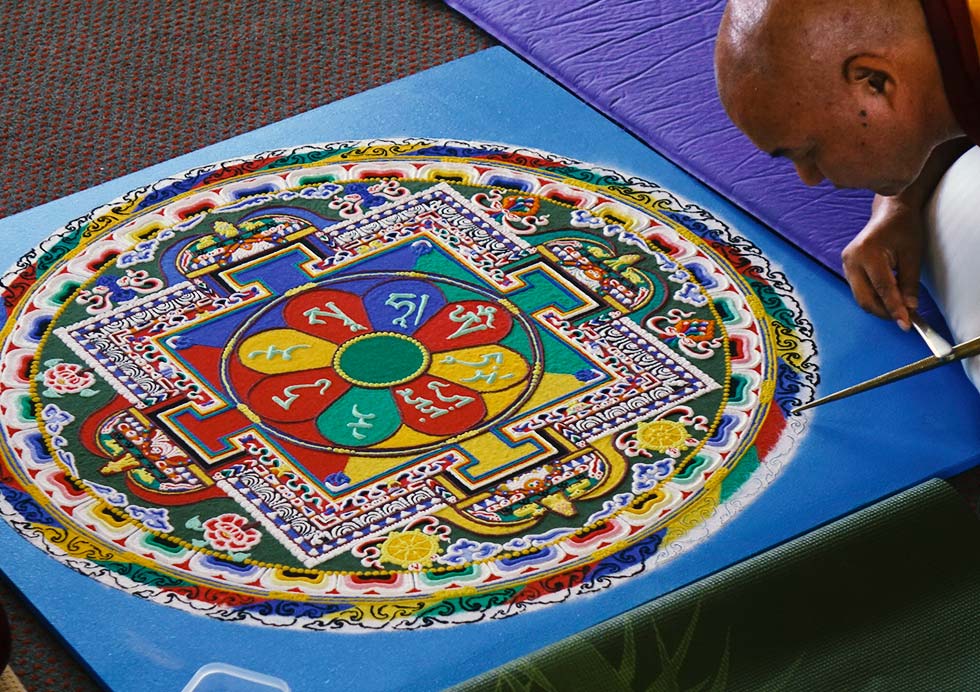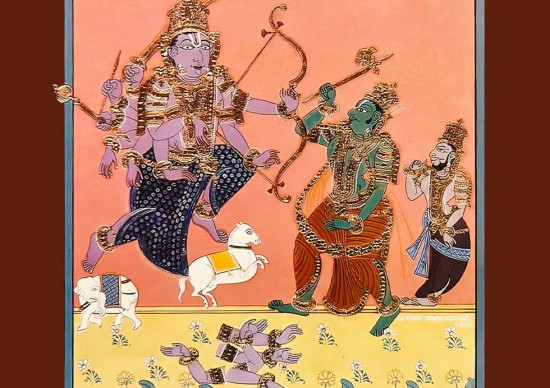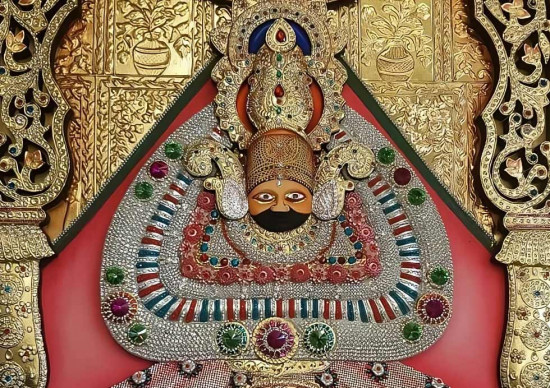
In Tibetan Buddhist Mandala Art, a mandala serves as a spiritual and ceremonial symbol. It can be interpreted in two different ways: internally as a manual for numerous activities common to many Asian traditions, including meditation; or externally as a picture of the cosmos.
According to Hinduism and Buddhism, when you enter a mandala and go toward its center, you are guided through a cosmic process that changes the cosmos from one that is filled with suffering to one that is filled with joy and happiness.
Mandala
According to Hinduism and Buddhism, when you enter a mandala and go toward its center, you are guided through a cosmic process that changes the cosmos from one that is filled with suffering to one that is filled with joy and happiness.
Mandala
Mandala art is a geometric design. A “magic circle” is referred to as a “mandala” in Sanskrit. Mandalas are believed to represent various aspects of the cosmos and are used as tools for meditation and signs of prayer, particularly in China, Japan, and Tibet.
Similar to other well-known historical paintings, mandala art is very well-liked. Mandalas are composed of sections that are all organized around a single central point and consist of circles encased within squares.
Mandalas are typically created on paper or cloth and are stitched, cast in bronze, or carved out of stone. Beyond their colorful appearance, mandalas have meditative and symbolic meanings. The mandala was originally intended to represent the full model for the organizational structure of life itself.
In the Modern Age, it is a diagram, chart, or geometric pattern that represents the universe metaphysically or symbolically; a time-microcosm of the universe. An image of the cosmos that illustrates the connection between the infinite and the world that lies outside of and inside of minds and bodies, as shown in the Buddhist Mandala Thangka Painting.
Similar to other well-known historical paintings, mandala art is very well-liked. Mandalas are composed of sections that are all organized around a single central point and consist of circles encased within squares.
Mandalas are typically created on paper or cloth and are stitched, cast in bronze, or carved out of stone. Beyond their colorful appearance, mandalas have meditative and symbolic meanings. The mandala was originally intended to represent the full model for the organizational structure of life itself.
In the Modern Age, it is a diagram, chart, or geometric pattern that represents the universe metaphysically or symbolically; a time-microcosm of the universe. An image of the cosmos that illustrates the connection between the infinite and the world that lies outside of and inside of minds and bodies, as shown in the Buddhist Mandala Thangka Painting.

Elements of Tibetan Mandala Art
A Mandala is an ancient Asian art form, majorly used in Hinduism and Buddhism. Common symbols can be found in mandalas through their intricate circular patterns. They typically include an abstract representation of the Buddha’s mind, most frequently a wheel, tree, flower, or jewel.
A dot, which is regarded as a symbol with no dimensions, makes up the center. It is seen as the beginning of devotion to the divine, the place where contemplation and devotion begin.
The outer circle, which represents the cyclical nature of life, surrounds the dot, which is then surrounded by lines and geometrical patterns that stand in for the universe. The Tibetan Buddhist Mandala Art contains several symbols that are typical.
A Wheel with Eight Spokes
A Mandala is an ancient Asian art form, majorly used in Hinduism and Buddhism. Common symbols can be found in mandalas through their intricate circular patterns. They typically include an abstract representation of the Buddha’s mind, most frequently a wheel, tree, flower, or jewel.
A dot, which is regarded as a symbol with no dimensions, makes up the center. It is seen as the beginning of devotion to the divine, the place where contemplation and devotion begin.
The outer circle, which represents the cyclical nature of life, surrounds the dot, which is then surrounded by lines and geometrical patterns that stand in for the universe. The Tibetan Buddhist Mandala Art contains several symbols that are typical.
A Wheel with Eight Spokes
A wheel’s round shape serves as a metaphor for the ideal universe in art. The Eightfold Path of Buddhism, a list of actions that result in liberation and rebirth, is symbolized by the eight spokes.
Bell
Bell
Bells stand for the mind’s opening and emptying so that wisdom and clarity can enter.
Triangle
Triangle
Triangles stand for movement and energy when they are facing upward, and creativity and the quest for knowledge when they are facing downward.
The Lotus Blossom
The Lotus Blossom
It is an important Buddhist emblem because its symmetry represents harmony. Humans strive for spiritual awakening and enlightenment in the same way that a lotus climbs up from the water into the light. Man strives for enlightenment and spiritual awakening.
The Sun
The Sun
The sun is a common starting point for contemporary mandala patterns. Suns frequently represent the universe and have connotations with life and energy.
Tibetan Buddhism, Mandala style
Tibetan Buddhism, Mandala style
Mandalas come in many different varieties, like the Buddhist Astronomical Thangka, and are used for a wide range of aesthetic and spiritual purposes in diverse civilizations. The three basic forms of mandalas and their applications are listed below.
Education Mandala
Education Mandala
Each shape, line, and color in a teaching mandala symbolizes a separate concept from a philosophical or religious system. As you can see in the Buddhist Kalachakra Mandala Painting, Mandalas are symbolic.
The student uses design and building principles to create their mandala, which serves as a visual representation of all they have studied. The creators of teaching mandalas use them as vivid mental maps.
Wellness Mandala
The student uses design and building principles to create their mandala, which serves as a visual representation of all they have studied. The creators of teaching mandalas use them as vivid mental maps.
Wellness Mandala
Mandalas for healing are designed for meditation and are more intuitive than mandalas for teaching. Healing mandalas are meant to impart knowledge, promote emotions of serenity, and direct focus and concentration.
Sand Mandala
Sand Mandala
Sand mandalas have long been utilized as traditional religious objects by Navajo and Buddhist monks. Numerous symbols formed from colored sand that signify the transience of human life are used in these elaborate patterns.








